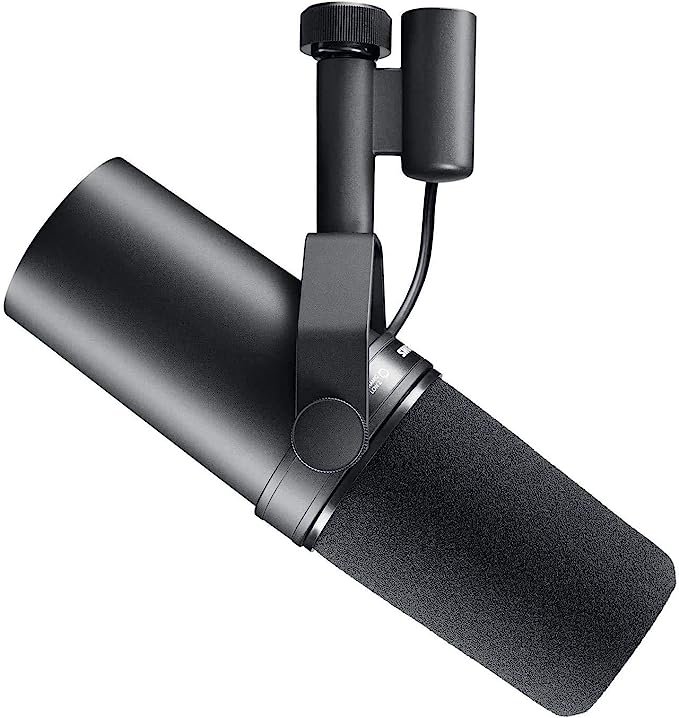
Choosing a Podcast Microphone
None of the picks are sponsored, and we do not receive any money if you buy the products from any of the links.
When it comes to microphones there are simple solutions and the not as simple solutions. Having the best sounding podcast starts with the microphone. You want to record with the best quality possible to make sure you audience hears your message. Once you have good audio, you can do a fair amount in editing to give it a different sound. Recording on your computer with a USB microphone that plugs directly into your computer is the quickest way to start. Other microphone types require more parts and knowledge.
The USB microphones are perfect if you are making a podcast over zoom or use your computer as your recorder. You can get started without breaking the bank. These microphones will also give you crystal clear audio in online meetings (maybe with a few adjustments to the computer settings). The list varies widely, yet these are the best ones I have come across that give the best quality audio.
The Blue Yeti is one of the most popular that you will see advertised and used by professional content creators. It is a simple plug and play with a reasonable price tag depending on where and what type you buy.
Blue Yeti USB Microphone
The Sennheiser Professional Profile lets you start using the brand trusted by professionals at an entry level price. This mic has simple plug and play technology with enough features to allow fine tuning to get the results you expect.
The HyperX QuadCast is the microphone If you are looking for something flashier while still capturing great audio. It has LEDs to create effects and create a unique look if you want to have the microphone in camera with filming a podcast or video team meetings.
HyperX QuadCast USB Microphone
There are plenty of others you can use. Below are some other options that can meet the need:
Shure MV7 USB (more expensive, but higher quality
If you are new and looking for something simple, I recommend stopping here. The rest of this article is for anyone looking for more advanced options and quality.
If you are looking for the best audio quality and professional microphone options, let’s talk about XLR microphones and computer interfaces. These microphones tend to cost more and have an extra piece of hardware to use it with your computer. However, these setups will improve audio quality and allow versatility for future projects. For most recording a podcast on their computer, these options and set up will be more than adequate.
Shure SM7B XLR Dynamic Microphone
First, we will look at XLR microphone options.
The Shure SM7B is the industry standard for audio recording podcasts and one seen most often if you watch video podcasts. This is also one of the most expensive on the market. If you need the highest level of professional sound and quality, this is the top choice.
Audio Technica creates several mid-range microphones that will provide great audio for podcasts. My recommendation for podcasts is the AT2040 that will provide simple setup. There are other options available from the company that are a different design that requires having a quieter recording space to get desired results.
The MXL BCD-1 is the microphone that I use for my podcasts. This is a lower-level price range for microphones, and it has worked great for me. Switching to these microphones from other non-broadcast microphones made an instant difference in audio quality.
MXL BCD-1 XLR Dynamic Microphone
The last part is the audio interface. This is needed to convert the XLR signal from the microphone to a language the computer can understand. An extra cord called an XLR is needed to connect the microphone to the interface. If they are not included in a kit with an XLR microphone, they can be found fairly inexpensive and with different lengths at local music stores or on Amazon.
Focusrite Scarlett Audio Interface
The audio interfaces vary in number of microphones you can plug into them and what quality of audio comes out. Spending more on this hardware can make a difference in how your podcast sounds as well.
1. One of the most common is the Focusrite Scarlett. This provides great quality of audio, and you can pick different sizes for more microphone inputs, if you are recording multiple microphones at once. The more microphone inputs, the more expensive.
2. Another quality one is the Behringer U-Phoria series. Behringer also produces large mixing boards that you might see at concerts or in a studio. This is slightly less expensive than the Focusrite products and provides great audio to computers.
3. The last one is the Zoom. They provide several different options of audio interfaces depending on your needs. I use Zoom products most often, including the LiveTrak L-8 for recording podcasts, and the H6 for on the go recording and an audio interface. This is the entry level brand and provides great quality for the price. Which Zoom item you choose depends on what other audio needs you may have. The simplest option from Zoom would be the AMS-44 interface.
Zoom LiveTrak L-8 Recorder and Audio Interface
Choosing the right microphone and system is critical for great audio of your podcast. The prices may be tough to digest, but if your audience cannot understand you, it reduces the impact of your message. It will be well worth the investment once you have hundreds and thousands of people enjoying your podcast!






